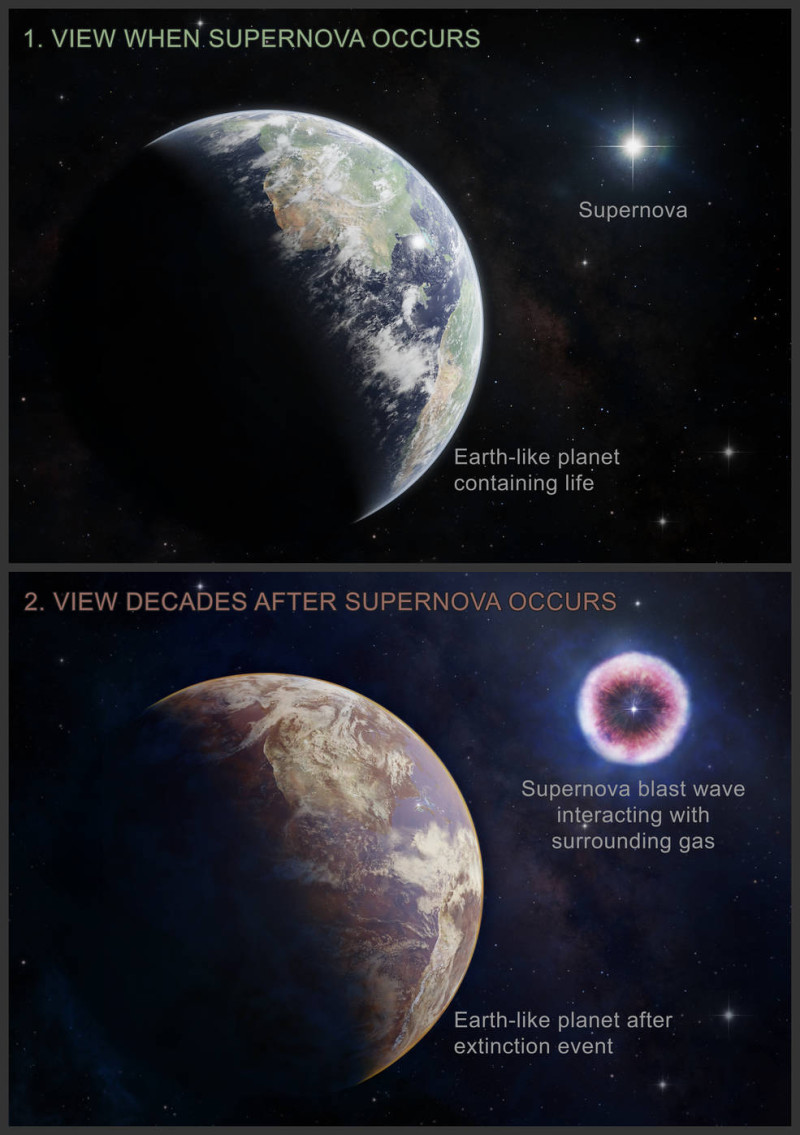The X-ray wave that can trigger an exploding star reaches up to 160 light-years away – Which supernovae have been recorded ‘closer’ to our Earth
The unknown forces of the Universe are revealed to humanity… With the new advanced instruments used by NASA and the space agencies with which it cooperates, it has managed to “decipher” dozens of secrets, in distant worlds, where the laws of nature seem to adapt in each environment.
Through Chandra X-ray Observatory, NASA discovered a new great danger to life on planets like Earth, and thus to humanity.
This threat, recently found by Chandra, comes from the blast wave of a supernova hitting dense gas surrounding the exploding star. When this impact occurs, it can produce a large dose of X-rays that reaches an Earth-like planet months to years after the explosion and can last for decades, as far as 160 light-years away. Such intense exposure can cause a life extinction event on the planet.
A new study citing this threat is based on X-ray observations of 31 supernovae and their aftermaths—mainly by NASA’s Chandra X-ray Observatory, the Swift and NuSTAR missions, and ESA’s XMM-Newton—and shows that planets can be subjected to lethal doses of radiation located approximately 160 light years away.
Four of the supernovae in the study (SN 1979C, SN 1987A, SN 2010jl and SN 1994I) appear in composite images containing Chandra data you can see in the image below.
Before that, most research into the effects of supernova explosions had focused on the hazard from two periods: the intense radiation produced by a supernova in the days and months after the explosion, and the energetic particles that arrive hundreds to thousands of years later.
If an X-ray flood sweeps a nearby planet, the radiation could severely alter the planet’s atmospheric chemistry. For an Earth-like planet, this process could wipe out a significant portion of the ozone, which ultimately protects life from its host star’s dangerous ultraviolet radiation. It could also lead to the disappearance of a wide range of organisms, especially marine ones at the base of the food chain, leading to an extinction event.
After years of lethal X-ray exposure from the supernova interaction and the impact of ultraviolet radiation from the host star of an Earth-like planet, a large amount of nitrogen dioxide can be produced, causing a brown haze in the atmosphere.
Supernova “near” Earth 2 to 8 million years ago
There is strong evidence – including the detection at various locations around the world of a radioactive type of iron – that supernovae occurred near Earth between about 2 and 8 million years ago. Researchers estimate that these supernovae were about 65 to 500 light-years away from Earth.
Although Earth and the Solar System are currently in a safe space regarding possible supernova explosions, many other planets in the Galaxy are not. These high-energy events would effectively shrink the regions within the Milky Way galaxy, known as the Galactic Habitable Zone, where conditions would be favorable for life as we know it.
Source :Skai
I am Terrance Carlson, author at News Bulletin 247. I mostly cover technology news and I have been working in this field for a long time. I have a lot of experience and I am highly knowledgeable in this area. I am a very reliable source of information and I always make sure to provide accurate news to my readers.











